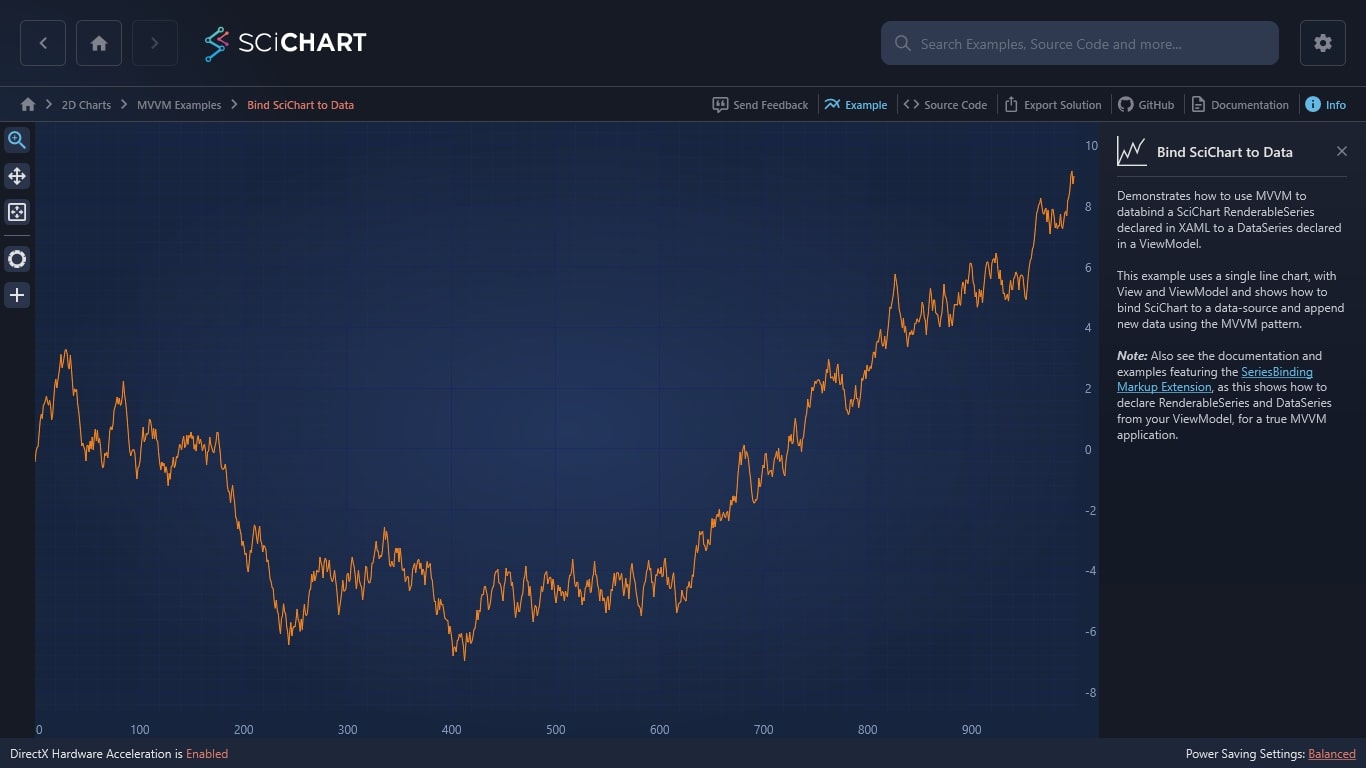WPF Chart - Examples
SciChart WPF ships with hundreds of WPF Chart Examples which you can browse, play with, view the source-code and even export each WPF Chart Example to a stand-alone Visual Studio solution. All of this is possible with the new and improved SciChart WPF Examples Suite, which ships as part of the SciChart WPF SDK.
Demonstrates how to use MVVM to databind a SciChart RenderableSeries declared in XAML to a DataSeries declared in a ViewModel.
This example uses a single line chart, with View and ViewModel and shows how to bind SciChart to a data-source and append new data using the MVVM pattern.
Note: Also see the documentation and examples featuring the SeriesBinding Markup Extension, as this shows how to declare RenderableSeries and DataSeries from your ViewModel, for a true MVVM application.
The C#/WPF source code for the WPF Chart Bind to Data MVVM example is included below (Scroll down!).
Did you know you can also view the source code from one of the following sources as well?
- Clone the SciChart.WPF.Examples from Github.
- Or, view source in the SciChart WPF Examples suite.
- Also the SciChart WPF Trial contains the full source for the examples (link below).


